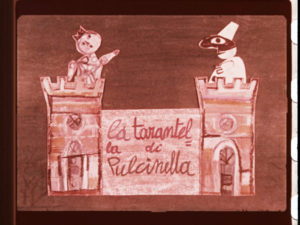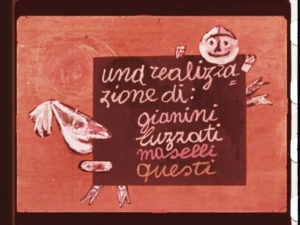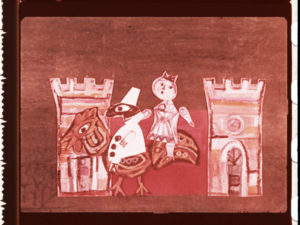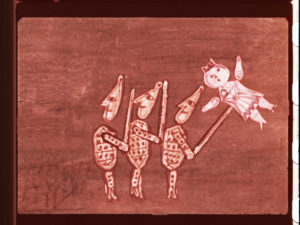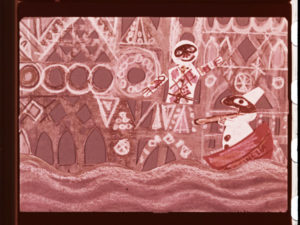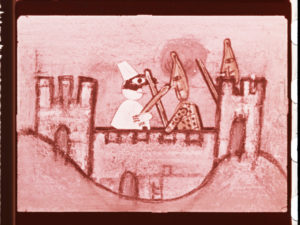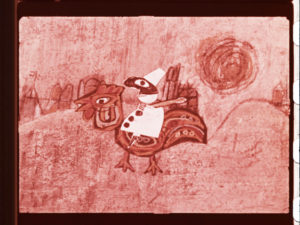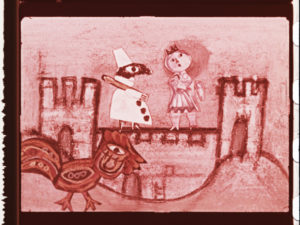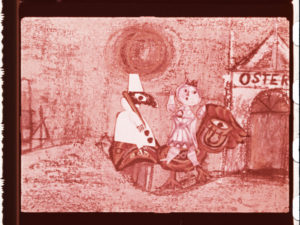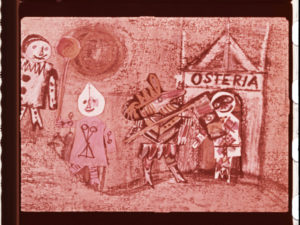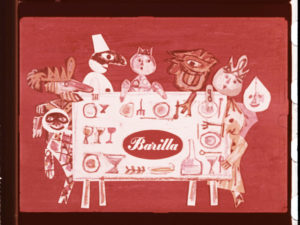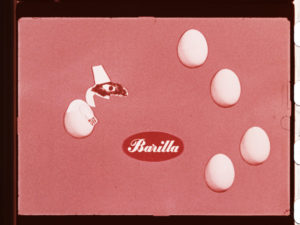Lele Luzzati, the eternal child artist
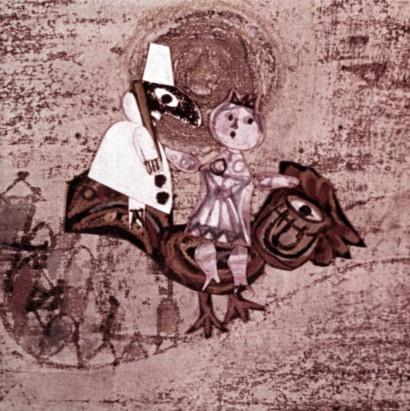
by Emmanuel Grossi
The 1950s were almost certainly the era of greatest experimentation in the field of audiovisual advertising. And not so much for Carosello, which arrived at the end of the decade and without who knows what sensational results (linked as it was to the television of the time, still very rigid and pompous), as for cinematographic commercials.
The (Italian) prodromes of advertising projected in cinemas date back at least to the first post-war period, but it is in the second post-war era that the economic-industrial ferments connected to Reconstruction and the great impulse of technical progress (like the advent of color) create the conditions for a flowering of this “art”. Live-action shorts were still naive, but graphics and animation render incredibly stunning results.
The Pagot brothers stand out in the field of cartoon animation, churning out hundreds of shorts, one more dazzling and creative than the other (nothing comparable with their beautiful Carosello production of the following years); in stop motion animation of objects, the brilliant Paul Bianchi obtained incredible results (still unmatched today), and put his inspiration and expertise at Barilla’s service twice.
Emanuele (Lele) Luzzati settles on the same levels of skill and inventiveness (and mediates the two techniques, applying stop motion animation to cut out figures from drawings). His unmistakable trait reverberates throughout the show and in figurative art of the Twentieth Century: from ceramics to sculptural inventions, from theatrical set decorations to illustrations of fairy tales to animated shorts inspired by lyric Opera (La gazza ladra and L’italiana in Algeri by Rossini, The magic flute by Mozart…).
At the end of the 1950s he made two shorts for Barilla intended for cinemas. In Marito a caccia (Husband on the hunt) pasta is presented as a solution to family problems, as well as to the problem of procuring food, since prehistoric times. But above all, La tarantella di Pulcinella, totally in its strings (the character will return in many of his other works over the years), in which Pulcinella faces a series of challenges across seas and mountains to save his beloved who was kidnapped by pirates and ultimately celebrates success with a banquet in a tavern.
In the making of these shorts, Luzzati is aided by two talented friends, his associates in the small production company Studio Firma based in Genoa: the cinematographer Giulio Gianini (who, despite his young age, already had a long career in art documentary making, for which he was also awarded a Nastro d’Argento) and the designer and cartoonist Marco Biassoni, who would soon come back (though indirectly) into the history of Barilla, creating a series of funny illustrations for Pavesini and the famous Carosello commercials of the Knights of the Round Table for Gran Pavesi crackers.
To make the two shorts even more interesting is the mystery that surrounds them: it is said that they never came out in theaters (perhaps because not line with the image that the company wanted to give of itself and its products) and were made public only decades later, as a precious find. Yet the Barilla Historical Archives received many copies of these, with signs of wear from repeated projection …
How did it really go? Does anyone with a good memory and who is no longer young remember seeing them at the cinema in the late fifties?
